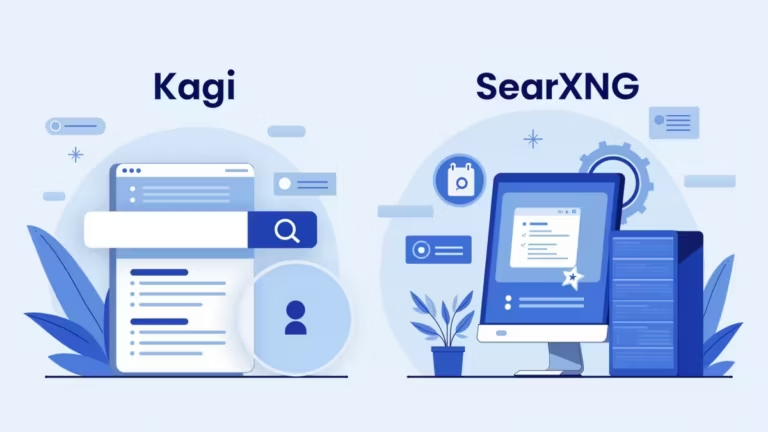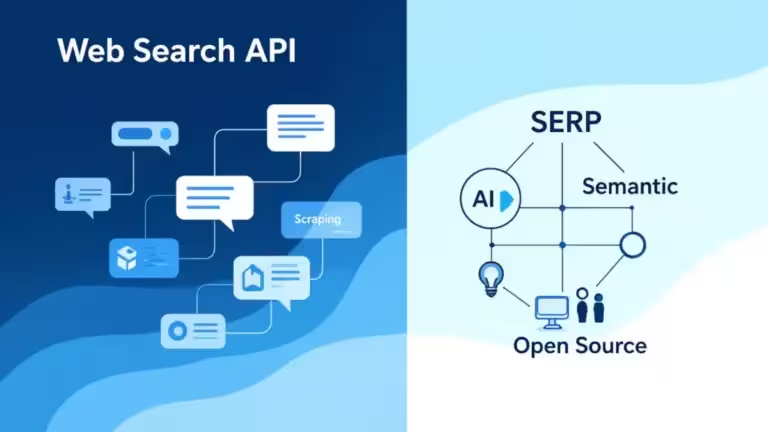Practical guide to configure SearXNG like Kagi (step-by-step with Docker and settings.yml)

Traditional search engines like Google and Bing have become synonymous with intrusive ads, user profiling, and limited control over search result quality. In response, new alternatives are emerging: Kagi, a paid search engine praised for its clean results and personalization, and SearXNG, a free, open-source metasearch engine focused on privacy, customization, and transparency.
SearXNG is free, but it requires some configuration to deliver high-quality results. The good news: with a few tweaks, you can adjust SearXNG to replicate much of the Kagi experience—without paying for a subscription. In this step-by-step tutorial, we’ll walk through how to deploy it with Docker, and then fine-tune your settings.yml file to filter sources, boost trustworthy sites, and block low-quality content.
Why Configure SearXNG Like Kagi?
Kagi has become popular thanks to its Leaderboard feature (see Kagi Leaderboard), which allows users to promote reliable websites like Reddit, Wikipedia, or Stack Overflow, while demoting content farms, spam, or irrelevant sources. This dramatically improves search quality.
While SearXNG doesn’t natively provide a Leaderboard, its flexible settings.yml configuration lets you achieve a similar effect:
- Boost specific sites to push them higher in the SERPs.
- Block unwanted domains like TikTok or spammy content mills.
- Mix engines (Google, Bing, DuckDuckGo) while avoiding reliance on a single provider.
In short: with the right setup, a self-hosted SearXNG instance can become a viable Kagi alternative.

Step 1 – Install SearXNG with Docker
One of SearXNG’s strengths is how easy it is to deploy with Docker. Whether you’re on a VPS, a local server, or even your workstation, here’s a minimal configuration:
version: '3'
services:
searxng:
image: searxng/searxng:latest
container_name: searxng
ports:
- "8080:8080"
volumes:
- ./settings.yml:/etc/searxng/settings.yml
restart: unless-stoppedStart the container:
docker-compose up -dAccess your local search engine:
👉 http://localhost:8080
At this stage, SearXNG is running, but the results are still “raw.” The real power lies in the settings.yml file.
Step 2 – Understanding the settings.yml File
The settings.yml file is the core of SearXNG customization. Here you can define:
- Which search engines to query (Google, Bing, DuckDuckGo, Wikipedia, YouTube…).
- Which sites to boost or block.
- Your language, region, and privacy preferences.
Minimal example:
general:
instance_name: "My SearXNG"
debug: false
search:
safe_search: 1
autocomplete: duckduckgo
engines:
- name: google
engine: google
disabled: false
- name: bing
engine: bing
disabled: false
- name: duckduckgo
engine: duckduckgo
disabled: false⚠️ Note: Some engines (especially Google) may block queries if you send too much traffic without an API key.
Step 3 – Recreate Kagi’s “Leaderboard” in SearXNG
Here’s where things get interesting: by adjusting site priorities, you can mimic Kagi’s Leaderboard.
Example: boost Reddit and Stack Overflow, block TikTok:
result_filters:
- name: boost_reddit
action: boost
pattern: reddit.com
weight: 2.0
- name: boost_stackoverflow
action: boost
pattern: stackoverflow.com
weight: 2.0
- name: block_tiktok
action: block
pattern: tiktok.comWith these rules in settings.yml:
- You’ll see more relevant results from Reddit and Stack Overflow at the top.
- TikTok results will be fully filtered out.
On Reddit, some users have shared similar configurations, reporting that they reached Kagi-like quality after customizing SearXNG filters.

Step 4 – Further Customize Your Results
SearXNG offers even more ways to refine your search:
- Limit enabled engines (disable noisy or redundant ones).
- Adjust engine weights (e.g., give more importance to Bing or DuckDuckGo, less to Yahoo).
- Configure SafeSearch for sensitive filtering.
- Enable a temporary cache for faster responses.
Example: engine weighting
engine_weights:
google: 1.5
bing: 1.0
duckduckgo: 0.8By balancing engine weights and fine-tuning filters, your open-source SearXNG instance becomes a powerful, privacy-respecting search engine—one that rivals premium options like Kagi.
Your comments enrich our articles, so don’t hesitate to share your thoughts! Sharing on social media helps us a lot. Thank you for your support!






